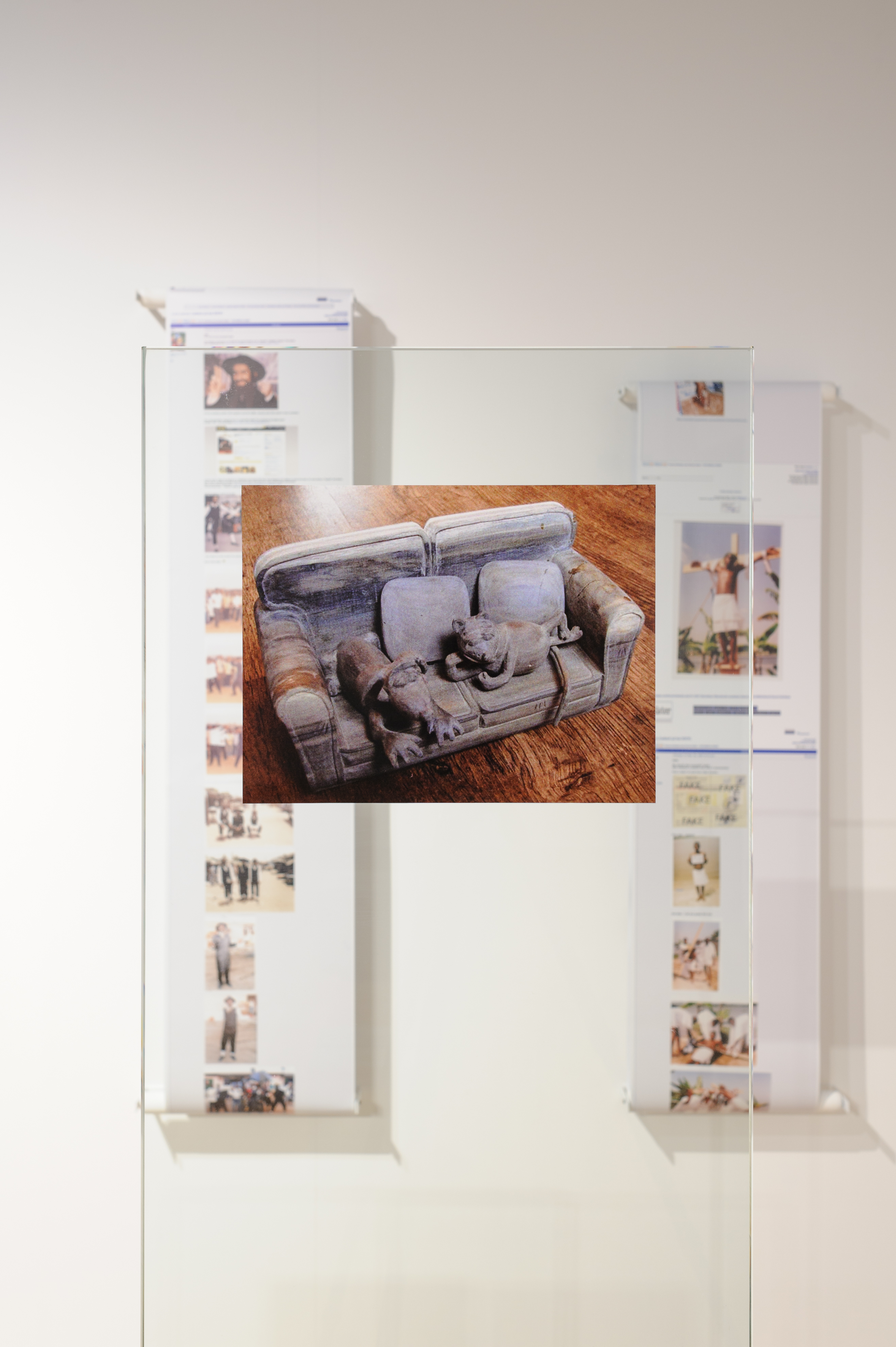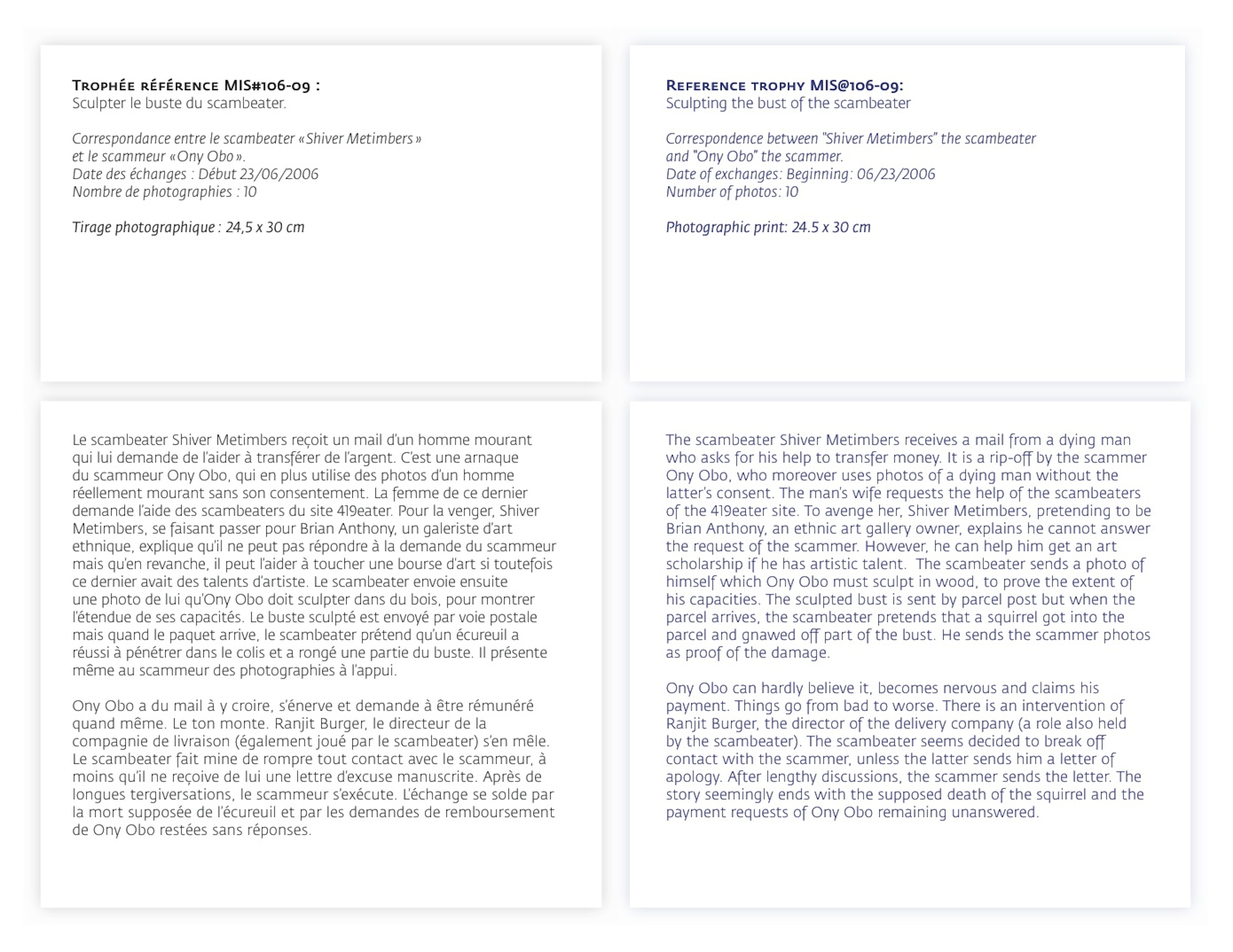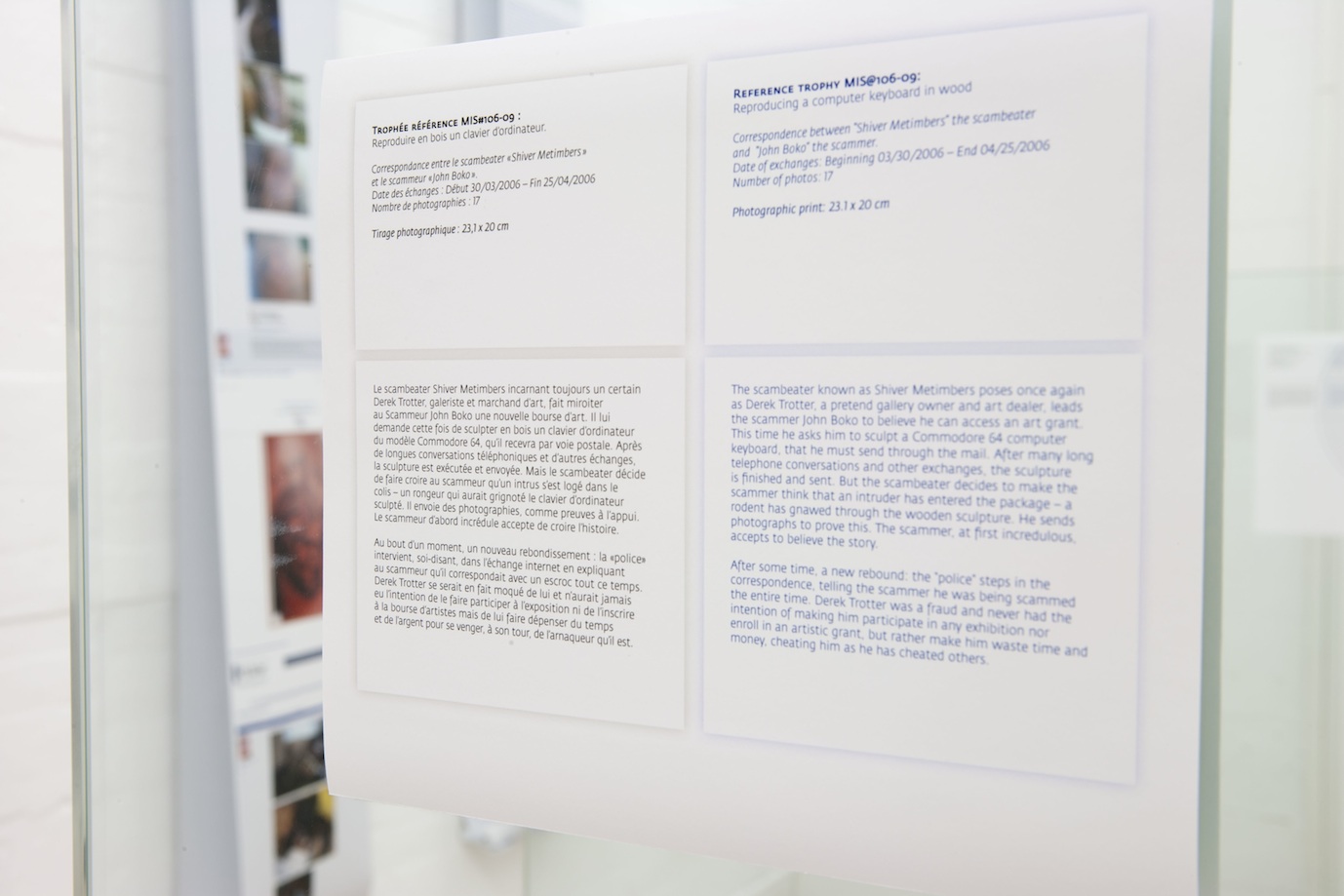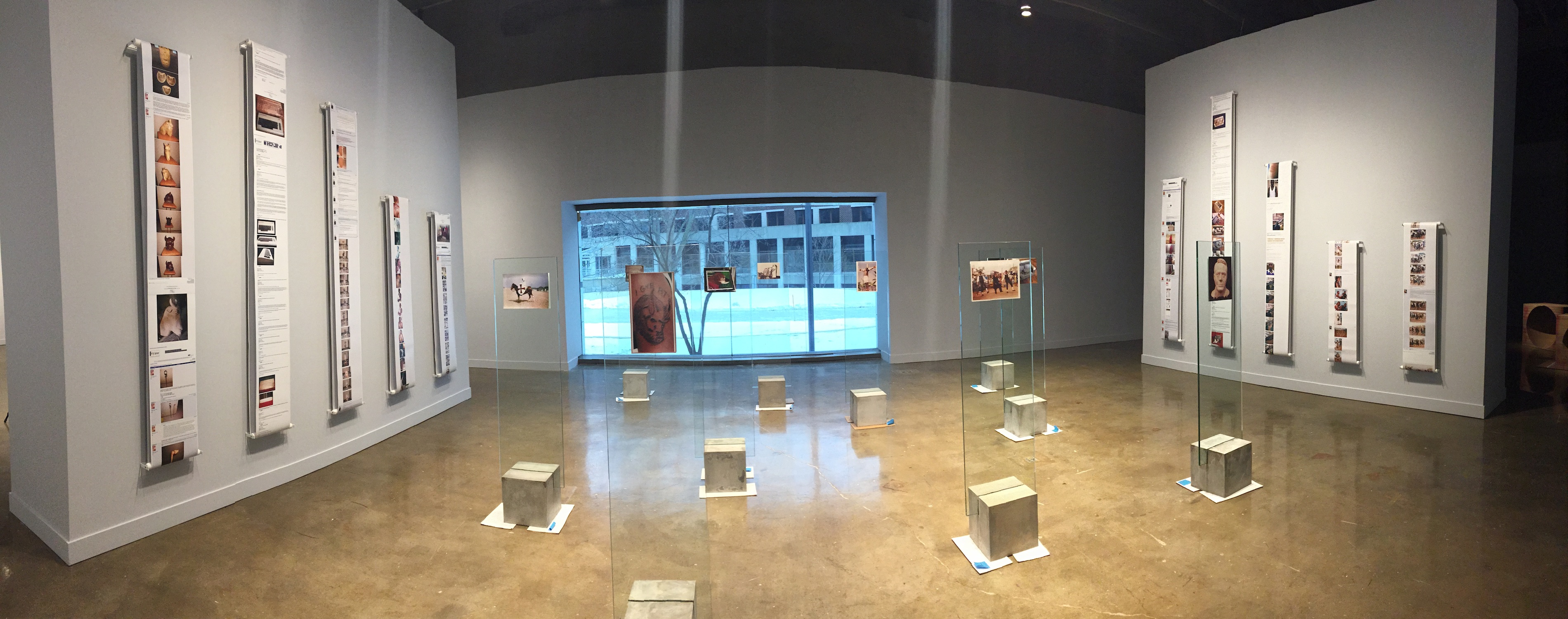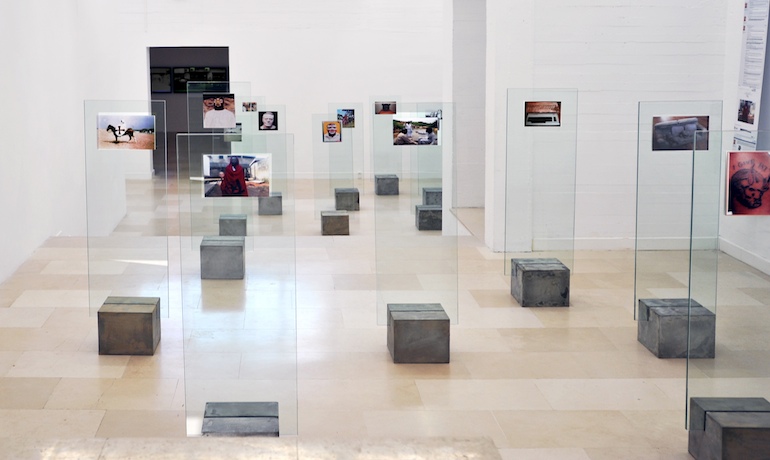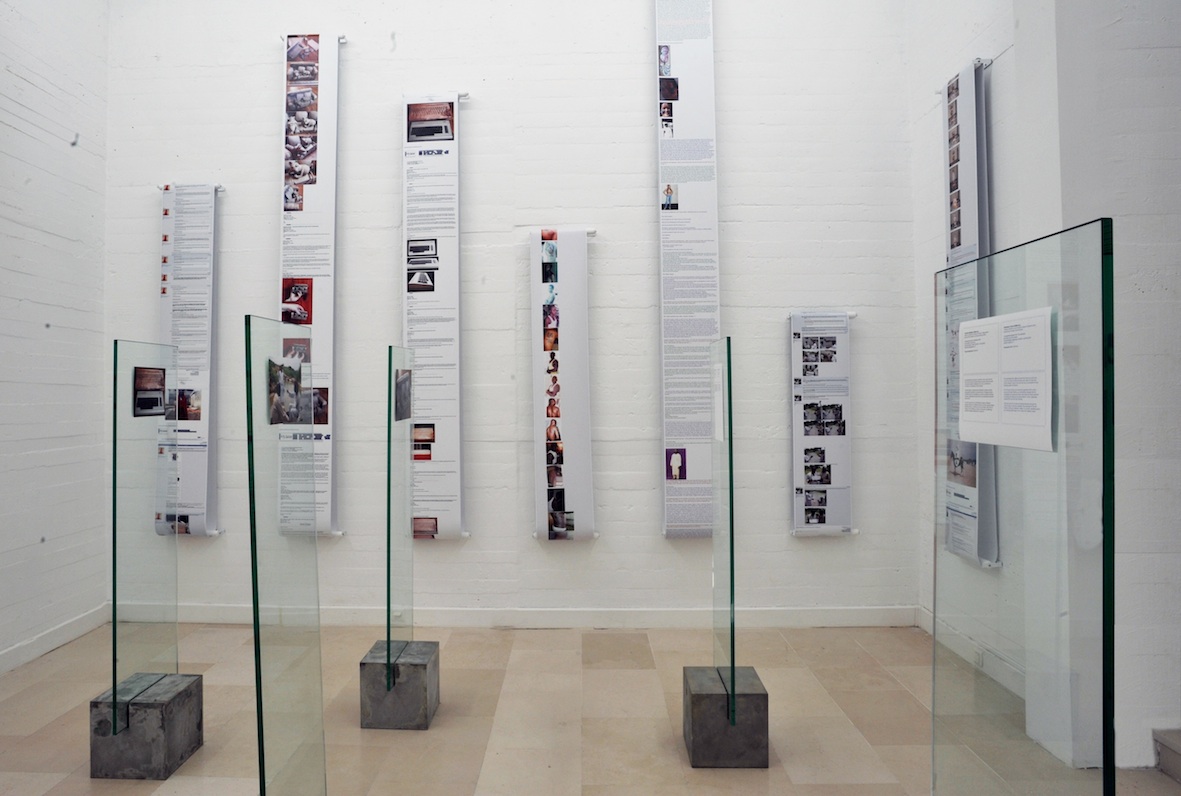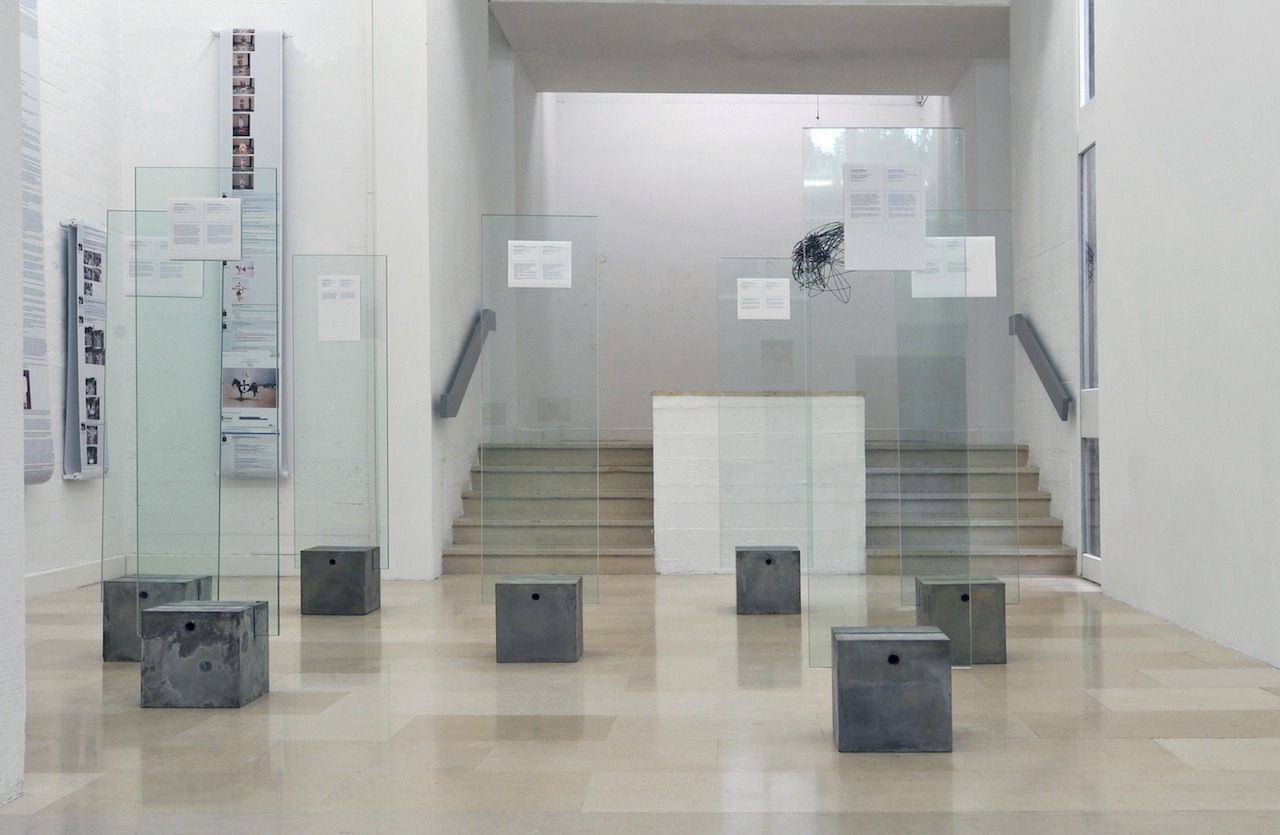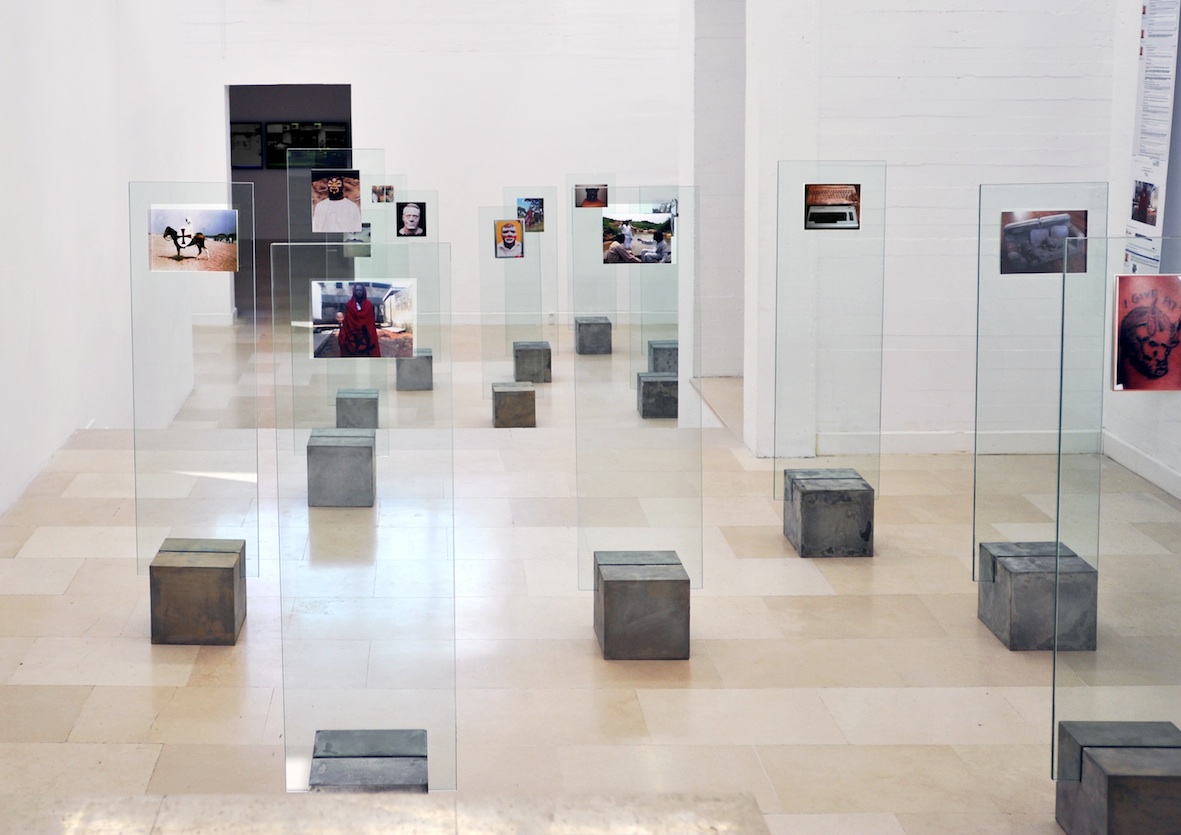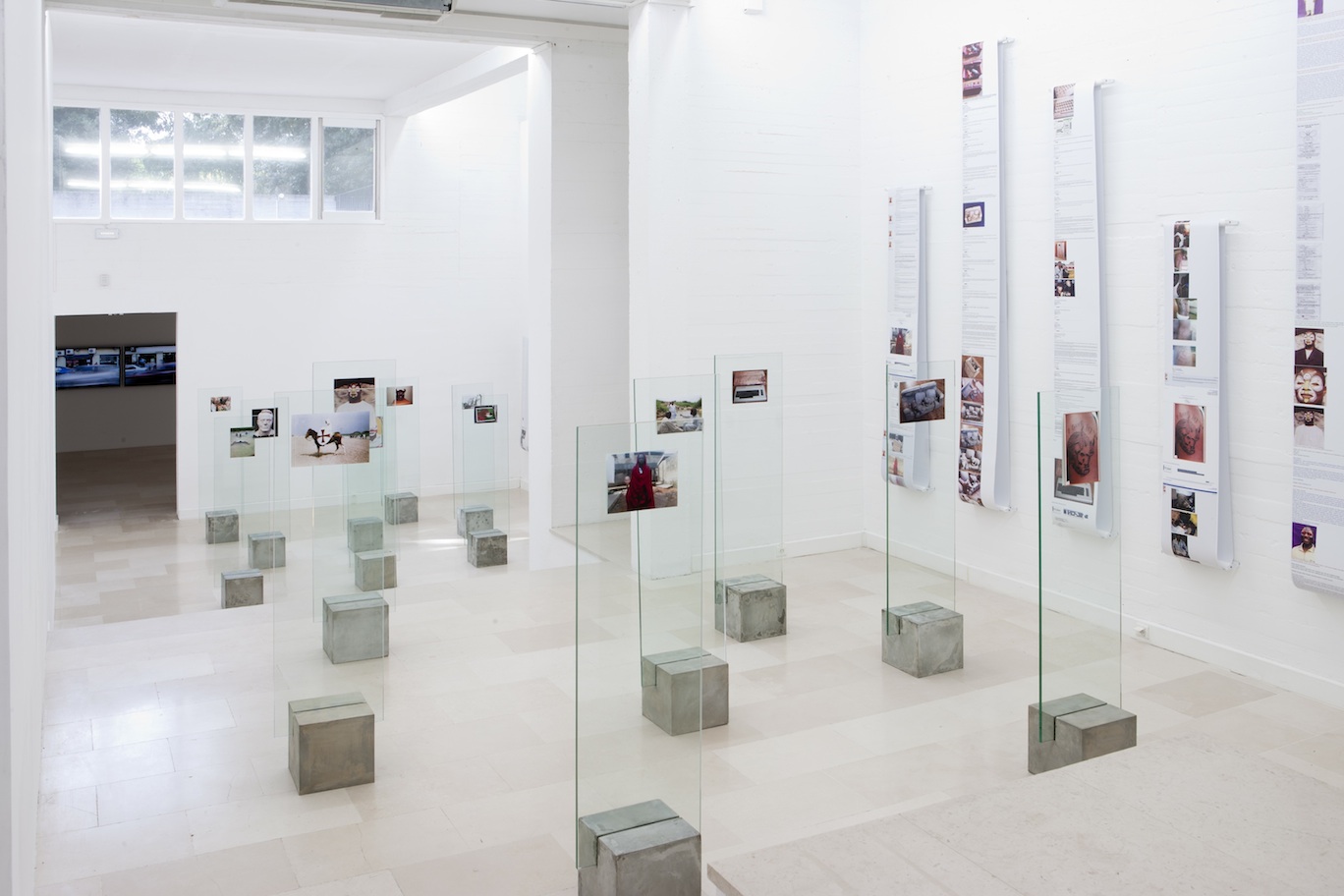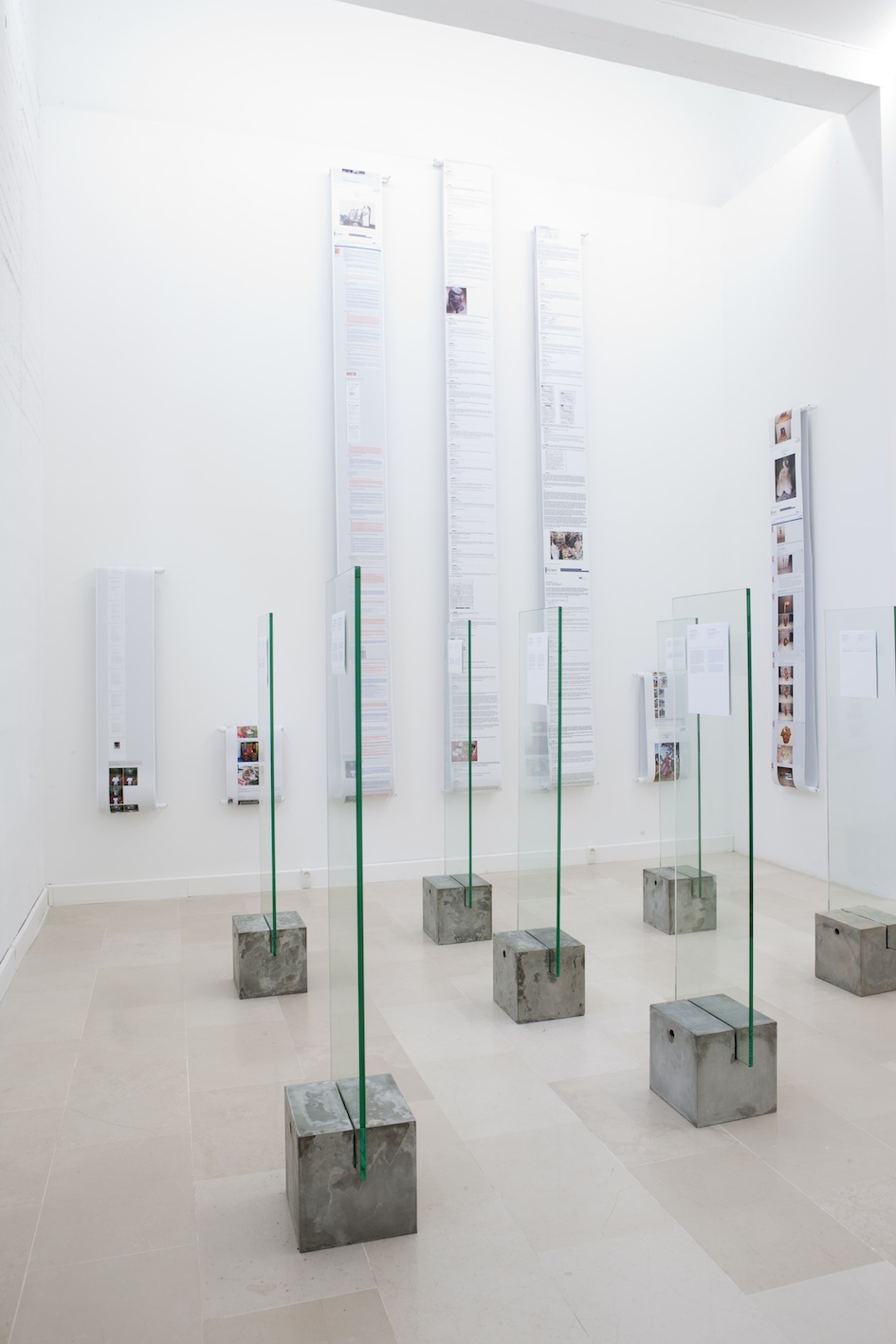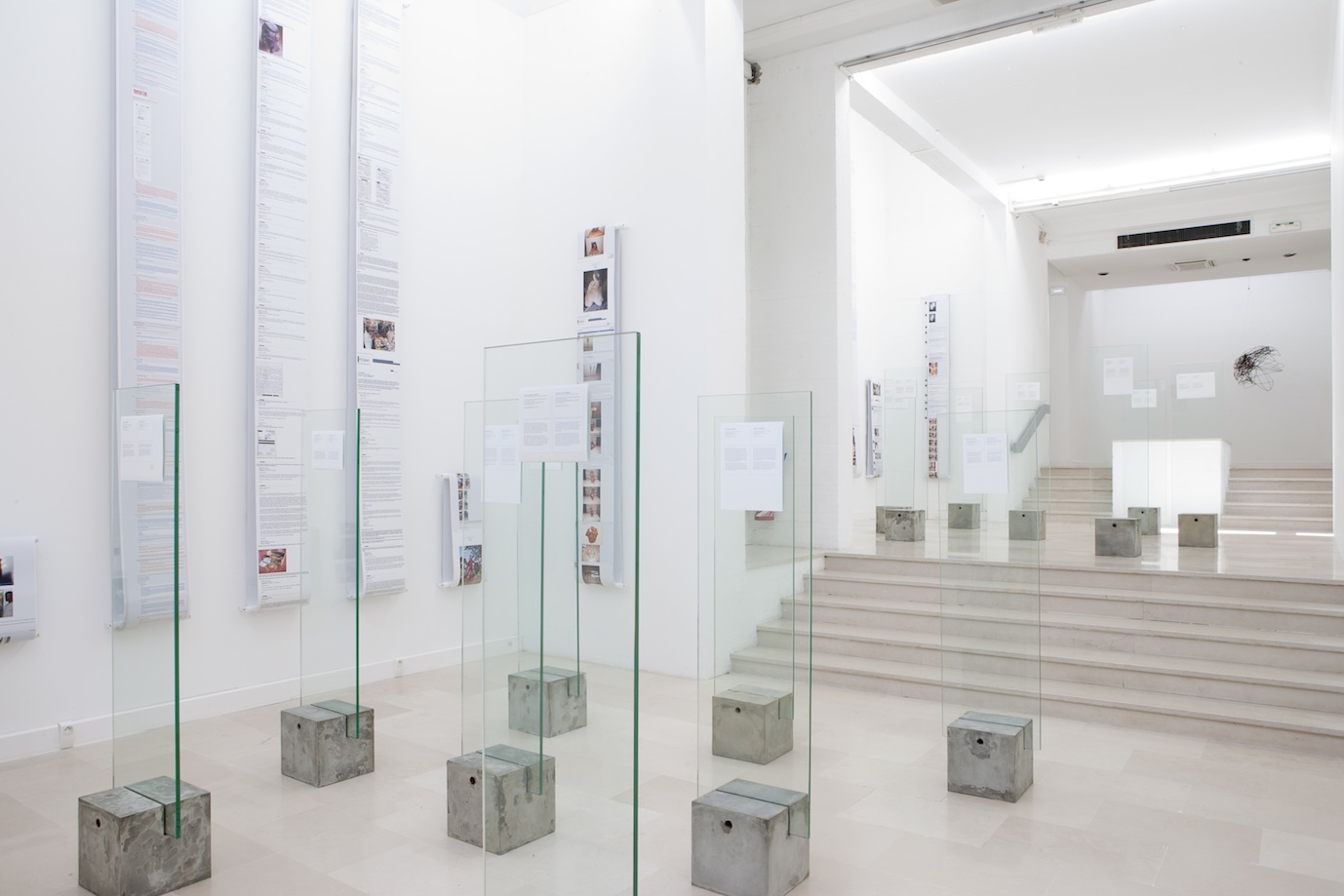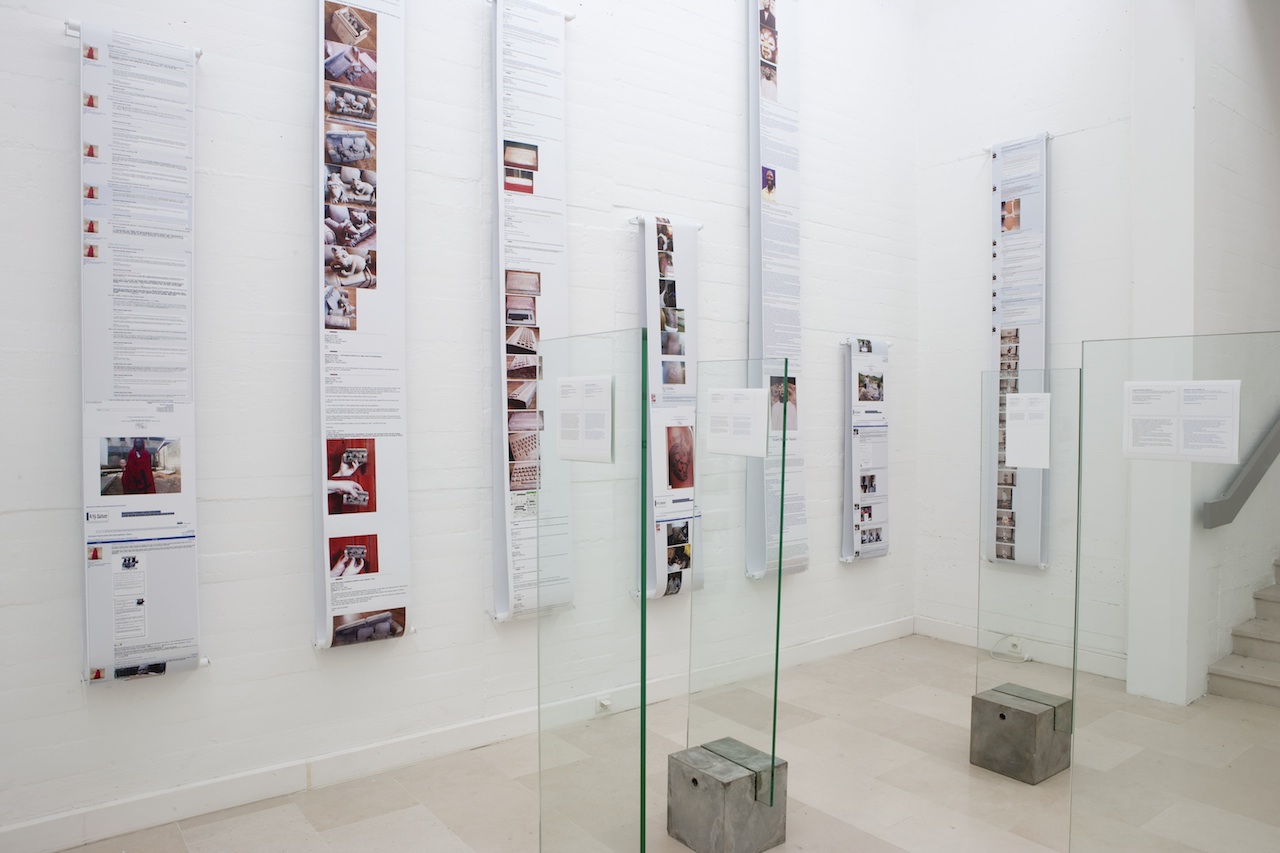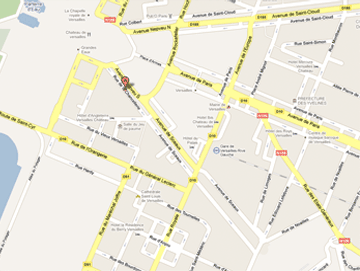About The Trophy Room, 2014 Part 5 of Scams (I must first apologise) project Displays, concrete, glass and photographs Laminated photo prints on rolls, cylinders, variable dimensions In response to these scammers, a group of individuals that call themselves scambbaiters or scambeaters, originating in the United States, have decided to fight back. Adopting a form of role-play, these individuals attempt to scam the scammers. They answer the emails, and play along with the narrative. These exchanges can last years sometimes, and their primary aim is to waste the scammers’ time. Because the 419 law in Nigeria severely punishes scammers, they operate out of Internet cafes. To waste their time is to waste their money. However, they also intend to trick the scammers and encourage them to execute various actions, at times bizarre and dreadful. This game can be very cruel, blurring the lines of credulity, abuse, power and domination, developing a strange link that shifts every role in the story.
The scambeaters ask the scammers for proof of their “good faith” or motivation. They follow the same routine. Usually, this starts with a questionnaire that the scammer is requested to fill out, then assume a disguise (a knight costume, clown, rock star, Jesus Christ,…) followed by a specific demand to produce an object: for example, the scammer must paint the portrait of a dog, sculpt a wooden computer keyboard, remake a Monty Python sketch or get his arm tattooed. It is unclear whether the scammer inflicts this humiliation or physical abuse upon himself or hires someone in exchange for money. Regardless of the level of knowledge or information concerning these practices, strangely, the only remaining motivation is the will to believe.
The different collected material (videos, photographs, paintings, sculptures and performances) are baptized trophies by the scambeaters, and exhibited in a “trophy room” (on the 419eater forum, for example) evoking a strange virtual museum. Twenty-three “trophies” are presented. Shown alongside them, the correspondences between scammers and scambeaters are transposed onto laminated prints. These commented exchanges are detailed by the scambeaters and bragged about, they are achievements but also adventures, epistolary novels complete with twists and suspense.
The chosen scenography for The Trophy Room is an eponymous reference to Lina Bo Bardi’s creation for the Sao Paulo art museum in André Malraux’s Le Musée Imaginaire, echoing art history today, the status of artwork, its production, circulation, and diffusion.

